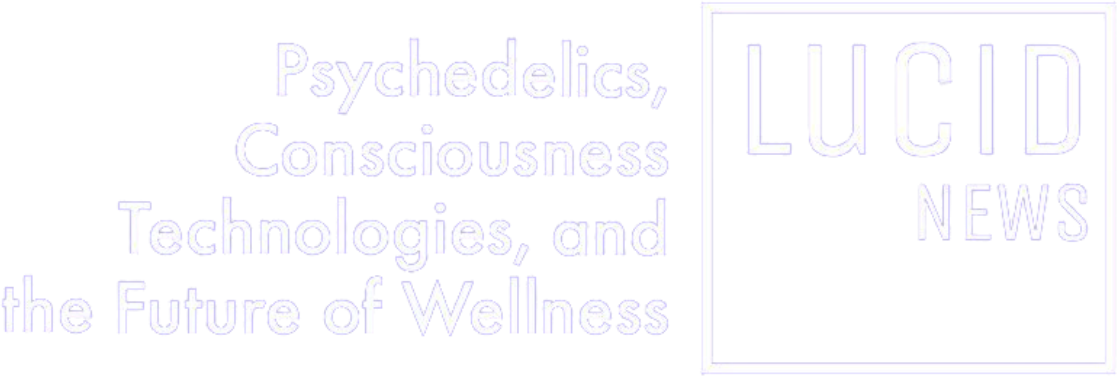Remembering Ann Shulgin and What She Taught Us About the Shadow

Ann Shulgin, who died July 9 at the age of 91, pioneered the field of psychedelic-assisted therapy. Together with her husband, legendary chemist Alexander “Sasha” Shulgin, Ann recognized the therapeutic potential of MDMA and 2C-B for healing and personal exploration. She understood that these, and other psychoactive compounds, have the power to access and help integrate the different layers of our psyches, and in particular, the shadow.
Ann and Sasha’s two historic books describing the properties of these materials – PiHKAL: A Chemical Love Story (1991) and TiHKAL: The Continuation (1997) – document the community of healers, scientists, scholars and psychonauts who they collaborated with to bring this knowledge forward. These books, among the many that Ann contributed to over her long career as an author, also told stories about her relationship with Sasha and their culture of collective psychedelic inquiry. When publishers found this work too controversial to print, the Shulgins launched Transform Press to share their findings.
Ann was a worldly person who was born in New Zealand where her father was a U.S. Consul, and lived in several countries before settling in San Francisco in her twenties. She trained as an artist and created beautiful art work. In addition to Sasha, Ann married several times, had four children, eight grandchildren, and five great-grandchildren. She was the matriarch of not just her immediate family, but of an extended community of psychedelic practitioners and researchers who gathered at Shulgin Farm throughout the years. Ann was a consummate hostess, who together with Sasha, had the remarkable ability to welcome people with a wide range of sometimes conflicting perspectives.
Many people, especially those whose families did not support their interest in psychedelics, turned to Ann and Sasha as wise elders and upstanding psychedelic citizens. By remaining fully present in their connection to community, they modeled the compassionate self awareness essential for the creation of collaborative knowledge and mutual support. As people worldwide are drawn to the resurgent interest and conflicts surrounding the healing potential of psychedelic compounds, these lessons are part of the Shulgin legacy.
As Sasha rediscovered MDMA and created 2C-B and a host of other psychedelic molecules, Ann and her clients explored these materials when they were still legal for therapy. Ann, Sasha, and their collaborators took great personal risks to pursue this knowledge. Law enforcement agents inspected Sasha’s lab at Shulgin Farm and the shadow of drug prohibition forced many psychedelic explorers in their community to live their lives as outlaws.
Moving forward undaunted and with an open heart, Ann’s early work as a lay therapist pointed the way for the present wave of healers, now training to work with psychoactive substances that could significantly improve mental health treatments. Ann brought to her investigations a deep understanding of Jungian psychoanalysis which identified the shadow as an inherent part of being human. The shadow, said Ann, “is all the things you don’t want to be consciously. And it’s all the things you are terrified you might be unconsciously.”
Ann gave a masterful presentation on shadow work at the 2019 Women’s Visionary Congress. While reflecting on her passing, I transcribed those remarks which you can read here. During her talk, Ann offered insights that reflected her role as a moral compass for the present global expansion of psychedelics. She was an alchemist of the soul and generous with the wisdom she left behind.
Shadow Work
Ann believed that people who chose to explore their consciousness with psychedelic drugs and visionary plants used these materials to either have fun or understand themselves as part of their spiritual path. She observed that most people do both and that during these experiences you will meet your inner demons or aspects of your shadow. Ann noted that in Buddhist teachings, the soul after death encounters these elements as guardians of the gate. One must not attempt to run away, she said, but instead, “look them in the face and acknowledge them as aspects of yourself.”
Ann credits C.G. Jung with first using the term “shadow,” but notes that this is often misunderstood to mean the “dark side,” an ultimate representation of evil, or the enemy. She noted instead that “the shadow is composed of all the qualities, all the feelings, all the thoughts and urges that you as an individual have come to believe, usually because you have been taught, are unacceptable, shameful, dirty, wicked, monstrous, nasty and foul smelling. So to speak. If this sounds like a classic description of the devil, it is not accidental.” The woman clearly delighted in her ability to use language for vivid illumination of important ideas.
The shadow, Ann explained, is created during our childhood process of becoming socialized and taught acceptable behavior by our families and communities. She observed that the first evolutionary law of childhood is physical and mental survival. To help ensure that we get the validation and support we need as children, we learn to behave in certain ways. Ann noted that even childhood fairy tales such as “Beauty and the Beast” describe an encounter with the shadow.
Ann taught that we gradually develop twin images of ourselves as both the beloved youth and the despised child who elicits anger from others. If we grow up in a loving family, we learn the rules of life without being made to feel that our unacceptable childish actions are proof that we are unlovable and intrinsically bad. “The reason we refer to ‘the shadow’ instead of ‘the shadows,” Ann explained, “is because all these forbidden parts of ourselves seem all the time to coalesce into a second identity. A secret forbidden version of ourselves.”
When our instinctual thoughts and feelings are condemned in this way, Ann noted that they are pushed down and denied. They become a hidden presence in the depths of our unconscious where they gain power without a chance to grow up and become adult. Ann pointed out that each person’s shadow is unique with differing degrees of strength. According to Ann, “a child brought up by wise and loving parents will have far less of a resident monster than a child brought up by hostile and punishing parents.”
Ann used the example of ancient Sparta to explain how the shadow can impact an entire society. Sparta, she noted, was famous for men who were raised to deny their fear of physical pain and be merciless to their enemies. Trained from boyhood as warriors to serve the state, the shadow was perceived as all feelings of empathy and love that undermined self-control and the ability to gain and keep power. These shadow qualities, Ann noted, were often projected onto the women of the tribe. “And of course in such countries, as in certain religions, women are regarded as the enemy, the temptors, the unwitting tools of the devil.”
Ann said that her greatest challenge in understanding the shadow was how we project our unconscious onto the world and the people around us. She believed that our shadow greatly impacts how we view others, especially those who stir in us feelings of dislike, fear or hatred. Ann asserted that this was one of the central questions of being human.
“It is this projection that causes war between clans and between nations,” said Ann. “What happens is that whatever we have tried to discard, do away with and deny in ourselves gets repressed, pushed down into the unconsciousness, but it doesn’t stop existing, it’s still there.”
“And when we meet a person who embodies any of the qualities we’ve denied and repressed in ourselves, we respond to that person with unease, discomfort or even hate. So if you have taken an instant dislike to somebody you have just met, and can’t figure out why, it’s a good idea to do an interior search. And if you’re prepared to be brutally honest with yourself, you will probably discover that the new person is exhibiting some kind of behavior or attitude that is a rejected aspect of your own nature.”
To illustrate this observation, Ann noted that hatred against LGBTQ people is often expressed by those who are unconsciously terrified of these desires within themselves. She believed that failure to acknowledge these repressed and hidden feelings can lead to them taking over at unexpected moments with sometimes tragic consequences.
“We have heard about the nice young man who takes his dad’s gun and kills his parents and continues on to the school to eliminate all the rest of his enemies,” said Ann. She noted that this also applies to “the sweet good natured guy who everyone loves, until he has a few drinks and turns into a monster.”
Alcohol itself is not the problem, said Ann, but rather its ability to crack open the basement door to our subconscious. When we repress and deny our shadow, it sometimes leads to actions that seem incomprehensible to ourselves and others.
For those seeking spiritual growth or personal clarity, Ann believed that engaging with one’s shadow was an essential part of the journey towards wholeness. By accepting all aspects of our nature without negative judgment, we can integrate these parts of ourselves instead of projecting them on to others.
Ann explained that you can work with your shadow either gradually or more intensively with a therapist or spiritual guide. She believed that psychedelics, hypnotherapy, and especially dreamwork all give us access to our unconscious, including the shadow and divine elements of our nature. “After all,” said Ann, “you are composed of light as well as dark. And your unconscious contains everything that isn’t conscious. Love and bliss along with demons and monsters.”
When you consciously go looking for your shadow, Ann noted that it often presents itself in animal form. “You find it, you look it in the face, you step into it. You step back out of it. And you accept it without hate. Without fear. Without judgment. Without rejection. You totally give up denial,” said Ann. “It’s probably the hardest, most terrifying process you’ll ever undergo in your life.”
Enduring Lessons
The purpose of making the shadow conscious, said Ann, is to transform it from monster to ally. This helps ensure that your decisions are made by your conscious, not your unconscious, self. She advised that once you commit to becoming aware of your shadow, you can exercise these insights in ordinarily uncomfortable situations by identifying those qualities in yourself and laying aside your disapproval. As a mentor and wise woman, Ann encouraged us to understand the origins of our shadow and integrate it into our lives as a useful instead of destructive force. Ann invited all of us to keep in mind Oscar Wilde’s famous words, “Nothing human is alien to me.”
As many people now know, psychoactive compounds can be powerful tools in this process of self discovery. In psychedelic hypnotherapy work, Ann said that she and her fellow practitioners took their patients one step further when confronting the shadow.
“We helped the patient step right into the monster and look out its eyes,” said Ann. “This is one of the most terrifying things any human being can attempt to do for one simple reason. Shadow part of him believes that it is the whole truth about who he really is. The shadow is his secret true identity. So the idea of stepping into this bad, awful thing is the threat of becoming it. Of being only it, of losing everything he has always tried to be; good, loveable, nice, kind. It is the threat of losing his soul.”
“No matter that the therapist tells him ahead of time, and over and over again as the process continues, that he is not his shadow. His shadow self still believes that it is the true self. Only when he has stepped into that dark animal shape and experiences its immense power and its lack of fear, because the shadow fears only one thing, that is being uncovered and seen. Only when the two have merged and the patient then chooses to step back out, does he understand that it is only a part of his whole self and not his true essential nature.”
As a master teacher, Ann observed that when we begin to transform our shadow, it becomes an ally. We can embrace it as part of our survival instincts and one of our strongest creative powers. As Ann noted with her typical wry sense of humor, “it will never have good table manners.” But as the Jungians also observed, it remains with us as a tough and fearless companion.
During her talk in 2019, Ann cautioned that supporting others through this process requires healers to do their own inner work. She acknowledged that there may be temptations to take shortcuts, as encountering the shadow is one of the most exciting and rewarding challenges that therapists and spiritual guides can undertake for their clients. “But nobody can, or should do this kind of work as a therapist until he has made the journey himself – and has met and transformed his own monster in the dark,” said Ann.
Ann had deep concerns about the mass commercialization of psychedelic therapies. She was skeptical of truncated therapeutic modalities optimized to return better revenues for shareholders. Psychedelic-assisted therapies that did not provide for integration were also less than ideal in her view. In private as well as public conversations, she emphasized that those working with psychoactive materials must themselves engage their own shadow. When asked during her talk for one piece of advice for healers who support patients on these journeys, Ann reminded us that this path requires time and commitment.
“You can’t do this work, you certainly shouldn’t try, if you haven’t done the work on your own, on your own shadow. It could be very harmful to the patient, because you have to know the territory. And when you ask it to trust you and what you say, you need to mean it. And he can’t trust what you say, if you don’t know what he’s going through yourself.”
Image: Transform Press









